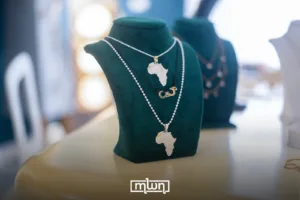Marrakech – As the sun sets on the ninth day of Muharram, tonight an ancient tradition comes to life in the streets and homes of Morocco. The air is filled with the scent of burning wood and the sound of laughter, as children and adults alike prepare for the festivities of Ashura.
This holiday, steeped in both Islamic and pre-Islamic history, is a time when Moroccans come together to celebrate life, honor the past, and embrace the mysteries of the unseen world.
Ashura in Morocco is a kaleidoscope of colors, flavors, and emotions. From the vibrant costumes worn by young girls as they dance to the beat of traditional drums, to the delectable treats shared among family and friends, every aspect of the holiday is imbued with meaning and symbolism.
Yet beneath the surface of these joyous celebrations lies a deeper current of spirituality and superstition, one that has shaped Moroccan culture for generations.
The religious significance of Ashura
At its core, Ashura holds immense religious significance for Muslims worldwide. The day marks the anniversary of several pivotal events in Islamic history, including the day Allah (God) saved Moses and the Israelites from the tyranny of Pharaoh by parting the Red Sea.
Many Moroccans observe a voluntary fast on the 9th and 10th of Muharram, following the tradition of Prophet Muhammad, who encouraged his followers to fast on this day.
In addition to its connection to the story of Moses, Ashura also holds special meaning for Shia Muslims, who mourn the martyrdom of Husayn ibn Ali, the grandson of Prophet Muhammad, during the Battle of Karbala in 680 CE. Although Morocco is predominantly Sunni, the influence of Shia Islam can still be seen in some of the country’s Ashura traditions.
Beyond its Islamic roots, Ashura has also been embraced by Moroccan Jews, who have historically celebrated the holiday alongside their Muslim neighbors. For Moroccan Jews, Ashura coincides with Yom Kippur, the Day of Atonement, and is a time for reflection, repentance, and seeking forgiveness.
Festive traditions and rituals

One of the most iconic traditions associated with Ashura in Morocco is the lighting of bonfires, known as “Shâala”. On the eve of Ashura, communities gather to build large bonfires using wood, old tires, and other flammable materials.
As the flames rise into the night sky, people dance and sing around the fire, believing that the smoke will ward off evil spirits and bring good luck for the coming year.
Another popular ritual is “Zamzam,” a water fight that takes place on the day of Ashura.
Children and young adults take to the streets armed with water guns, buckets, and balloons filled with water, engaging in playful battles that symbolize the purifying power of water. Some Moroccans also believe that the water used during Zamzam has healing properties, as it is thought to be connected to the sacred well of Zamzam in Mecca.
In some parts of Morocco, Ashura is celebrated with a carnivalesque atmosphere, featuring colorful parades, traditional music, and street performances.
Participants dress up in elaborate costumes and masks, often depicting characters from Moroccan folklore or Islamic history. These lively processions serve as a visual representation of the joy and unity that characterize Ashura celebrations.
One of the most intriguing figures associated with Ashura in Morocco is “Baba Achour,” a mythical character akin to Santa Claus in the Western tradition, who is believed to bring good fortune and blessings to those who encounter him. Children go door-to-door, singing songs and asking for treats or small gifts in honor of Baba Achour, much like the tradition of trick-or-treating during Halloween.
The “Taarija” is a traditional Moroccan percussion instrument that holds a special place throughout these celebrations. Crafted with care over the course of a year, the Taarija is made from clay, then adorned with goat or sheep skin and intricately decorated with paints and dyes.
Its unique sound fills the air during the festive nights of Ashura, as women and men, young and old, gather in the ancient city’s alleyways to sing, dance, and honor this centuries-old tradition, creating an enchanting atmosphere of joy and unity.
Read also: Ashura in Morocco: a Cultural Experience of Food, Fire, and Water
Culinary delights and family gatherings

No Ashura celebration in Morocco is complete without an abundance of delectable treats and traditional dishes. Families gather to prepare and enjoy a variety of sweets and savory delights, each with its own symbolic meaning and cultural significance.
One of the most popular Ashura treats is “Fakia,” a mixture of dates, figs, raisins, almonds, and walnuts. Fakia is believed to bring good health and prosperity, and is often served as a snack or dessert throughout the Ashura period.
Another beloved dish is “Rfissa,” a hearty stew made with lentils, chicken, and a variety of spices, served over shredded pastry bread. Rfissa is traditionally prepared on the eve of Ashura and is said to bring strength and vitality to those who consume it.
Couscous, the national dish of Morocco, also plays a central role in Ashura celebrations. Families prepare couscous with seven vegetables, each chosen for its symbolic significance and believed to bring blessings and good fortune.
During these days, women gather for a celebration called “Gueddida,” which is organized in honor of a woman who has not been blessed with children. Each woman contributes a piece of dried meat, and they come together in one of the houses to prepare a couscous dish with vegetables and the dried meat.
In addition to these traditional dishes, Moroccans also indulge in a variety of sweet treats during Ashura, such as “Sellou,” a dessert made from toasted sesame seeds, almonds, and honey, and “Chebakia,” a deep-fried cookie dipped in honey and sprinkled with sesame seeds.
Acts of charity and kindness

Ashura is not only a time for celebration and feasting but also a time for giving back to the community and showing compassion to those in need. Many Moroccans use this occasion to perform acts of charity and kindness, embodying the Islamic values of generosity and social responsibility.
One common practice during Ashura is the distribution of food and other necessities to the poor and underprivileged. Families prepare extra portions of traditional dishes and sweets, which they then share with their less fortunate neighbors or donate to local charities and mosques.
Some Moroccans also choose to pay their annual “Zakat,” or mandatory alms, during the Ashura period. Zakat is one of the five pillars of Islam and requires Muslims to donate a portion of their wealth to those in need. By fulfilling this obligation during Ashura, Moroccans not only support their communities but also deepen their spiritual connection to the holiday.
In addition to material gifts, Ashura is also a time for offering forgiveness, reconciling differences, and strengthening social bonds. Many Moroccans use this opportunity to mend broken relationships, visit estranged family members, and extend gestures of goodwill to those around them.
Superstition and the supernatural during Ashura
Amidst the joyous celebrations of Ashura in Morocco, there is an undercurrent of superstition and belief in the supernatural that permeates the holiday. Many Moroccans hold fast to the idea that the veil between the material and spiritual worlds is at its thinnest during this time, allowing for a greater interaction between humans and the unseen forces that shape their lives.
One of the most prevalent superstitions surrounding Ashura is the belief in the power of “Zamzam” water. According to popular tradition, all the rivers and wells in the world are blessed with the same miraculous properties as the sacred well of Zamzam in Mecca during the night of Ashura.
Moroccans seek to collect this water and use it for a variety of purposes, from drinking and cooking to washing and bathing. Some even believe that sprinkling “Zamzam” water on their crops and livestock will bring prosperity and abundance in the year to come.
Another common superstition associated with Ashura is the idea that the holiday is a particularly auspicious time for practicing magic and divination.
Many Moroccans, particularly women, seek out the services of traditional healers and fortune-tellers during this period, hoping to gain insight into their futures or to find solutions to their problems.
These practitioners often use a variety of tools and techniques, from reading tea leaves and interpreting dreams to casting spells and creating protective amulets.
The belief in the presence of spirits and supernatural beings is also heightened during Ashura. Some Moroccans hold that the souls of the dead return to earth on this night, seeking to communicate with their loved ones or to settle unfinished business.
Others believe that mischievous spirits known as “jinn” are particularly active during this time, causing trouble and mischief for those who cross their path. To protect themselves and their homes from these otherworldly forces, Moroccans may engage in a variety of rituals, such as burning incense, reciting prayers, or placing protective charms around their dwellings.
While these superstitions and beliefs may seem strange or even frightening to outsiders, they are an integral part of the rich cultural tapestry that makes Ashura in Morocco so unique. For many Moroccans, the supernatural is not something to be feared or avoided, but rather a natural and accepted part of the world they inhabit.
Challenges and controversies

Despite the joy and unity that characterize Ashura celebrations in Morocco, the holiday is not without its challenges and controversies. In recent years, concerns have been raised about the safety and environmental impact of certain Ashura traditions, as well as the commercialization of the holiday.
One of the most pressing issues surrounding Ashura in Morocco is the use of firecrackers and fireworks, which have become increasingly popular among children and young adults.
While these pyrotechnics add to the festive atmosphere, they also can pose significant risks of injuries, fires, and even fatalities. Moroccan authorities have attempted to crack down on the sale and use of illegal fireworks, but enforcement remains a challenge.
Another concern is the environmental impact of the Shâala bonfires, which release harmful pollutants into the air and contribute to the country’s already high levels of air pollution. Some activists have called for the tradition to be modified or replaced with more eco-friendly alternatives, such as LED light displays or solar-powered lanterns.
In addition, despite Morocco’s ongoing drought and the increasing scarcity of water resources, the “Zamzam” water fights remain a popular tradition during this time. The large quantities of water used in these festivities may not only contribute to the ecological strain but also raise questions for some about the responsible use of this precious resource.
The commercialization of Ashura has also drawn criticism from some quarters, with concerns that the spiritual and cultural significance of the holiday is being overshadowed by consumerism and materialism.
The proliferation of Ashura-themed merchandise, such as toys, clothing, and decorations, has led some to question whether the true meaning of the holiday is being lost amidst the commercial frenzy.
Despite these challenges, many Moroccans remain committed to preserving the authentic spirit of Ashura and passing down its traditions to future generations.
Read also: Ashura in Morocco: Somewhere Between Culture and Religion















